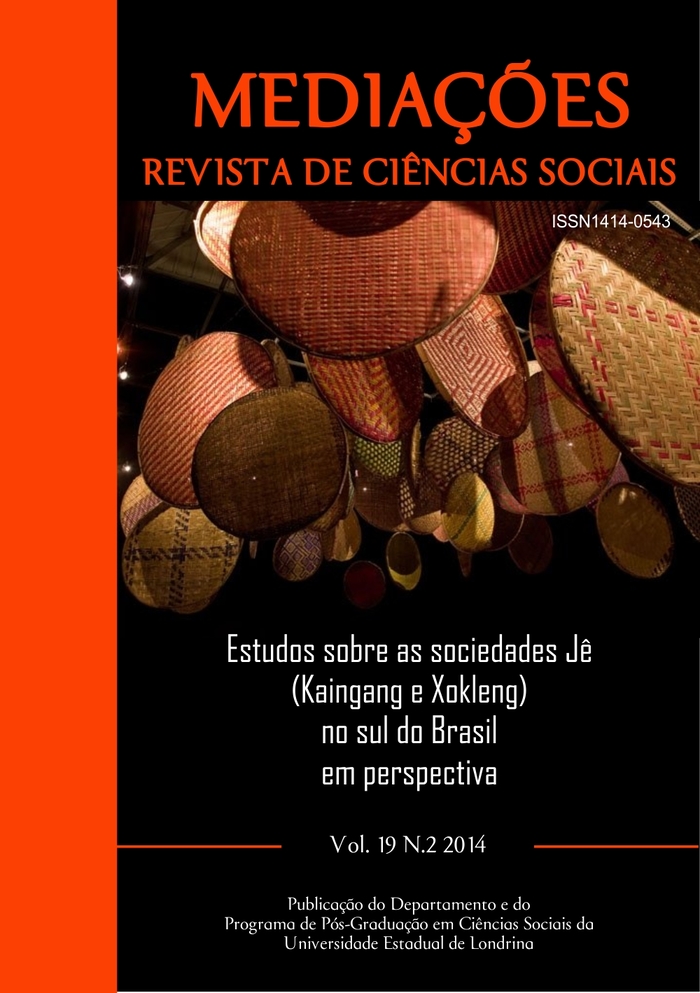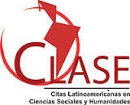Respect and reciprocity, referencial aspects of kaingang morality
DOI:
https://doi.org/10.5433/2176-6665.2014v19n2p146Keywords:
Kaingang, Morality, Leadership, Apucarana indiginous landAbstract
This article proposes the concept of morality to the analysis of the kaingang sociability as grounded in reciprocity and respect. Beyond generosity and reciprocation, the internal “law” is a rhetorical and practical element which indicates ways of behavior seen as necessaries to avoid misbehavior and ensure the respect between the families, with the condemnation of the faults. Reciprocity and respect are also proposed here as root elements to the cacique’s power. The chief position represents the referential example to all the others, and he articulates the different groups that compose the community. So, morality, with a spatial and temporal mark, regulates the composition of the collectivity, as “parentagens” and families living together, and defines possibilities of opposition when becomes necessary to redefine alterities.Downloads
References
AQUINO, Alexandre Magno de. Ën ga uyg ën tóg (nós conquistamos nossas terras): os Kaingang no litoral do Rio Grande do Sul. 2008. Dissertação (Mestrado em Antropologia Social) - Universidade de Brasília, Brasília, 2008.
CIMBALUK, Lucas. A criação da aldeia água branca na terra indígena Kaingang Apucaraninha: “política interna”, moralidade e cultura. 2013. Dissertação (Mestrado em Antropologia Social) - Universidade Federal do Paraná, Curitiba, 2013.
CLASTRES, Pierre. A sociedade contra o Estado: pesquisas de antropologia política. São Paulo: Cosac&Naify, 2003.
DICIONARIO: kaingáng-português, português-kaingáng. Brasília: Summer Institute of Linguistics, 1981.
FERNANDES, Ricardo Cid. O “15” e o “23”: políticos e políticas Kaingang. Revista Campos, Curitiba, v. 7, n. 2, p.27-47, 2006.
FERNANDES, Ricardo Cid. Política e parentesco entre os Kaingang. 2003. Tese (Doutorado em Antropologia Social) - Universidade de São Paulo, São Paulo, 2003.
GORDON, César. Economia selvagem: ritual e mercadoria entre os índios Xikrin-Mebêngôkre. São Paulo: Ed. UNESP, ISA; Rio de Janeiro: NUTI, 2006.
GOW, Peter. Ex-Cocama: identidades em transformação na amazônia peruana. Mana, Rio de Janeiro, v. 9, n. 1, p. 57-79, 2003.
GOW, Peter. An Amazonian myth and its history. Oxford: Oxford University Press, 2001.
GOW, Peter. Of mixed blood: kinship and history in Peruvian Amazonia. Oxford: Oxford Clarendon Press, 1991.
OVERING, Joanna; PASSES, Alan. introduction: conviviality and the opening up of amazonian anthropology. In: OVERING, Joanna; PASSES, Alan. The anthopology of love and anger: the aesthetics of conviviality in Native Amazonia. London; New York: Routledge, 2000. p. 1-30.
RAMOS, Luciana Maria de Moura. Vénh Jykré e Ke Há Han Ke: permanência e mudança do sistema jurídico dos kaingang no Tibagi. 2008. Tese (Doutorado em Antropologia Social) - Universidade de Brasília, 2008.
SOUZA, Marcela S. Coelho. O traço e o círculo: o conceito de parentesco entre os Jê e seus antropólogos. 2002. Tese (Doutorado em Antropologia Social) - Universidade Federal do Rio de Janeiro -UFRJ, Rio de Janeiro, 2002.
SULKIN, Carlos David Lodoño. People of substance: an ethnography of morality in the Colombian Amazon. London: University of Toronto Press, 2012.
TEIXEIRA-PINTO, Márnio. IEIPARI – Sacrifício e vida social entre os índios Arara. São Paulo: HUCITEC; ANPOCS; Curitiba: Editora da UFPR, 1997.
TOMMASINO, Kimiye. A história dos Kaingang da bacia do Tibagi: uma sociedade Jê Meridional em Movimento. 1995. Tese (Doutorado em Antropologia Social) - Universidade de São Paulo, 1995.
Downloads
Published
How to Cite
Issue
Section
License
Copyright on articles published in Mediações belongs to the author(s): in the case of partial or entire republication of the original publication, we ask author(s) to indicate the original publication in the periodical.
Mediações uses the Creative Commons Attribution 4.0 International license, which allows Open Access, enabling any user to read, download, copy and disseminate its content so long as adequately referenced.
The opinions expressed by the author(s) are their sole responsibility.
































